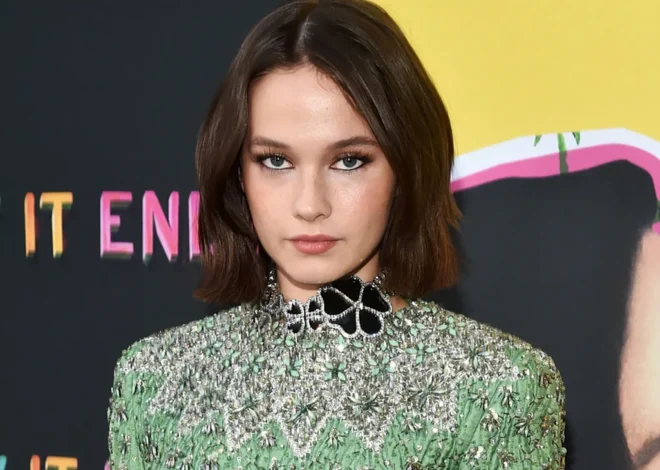
The Owner of the Chief’s Daughter: A Tale of Tradition, Love, and Legacy
Throughout history, stories of chiefs, their families, and the societies they lead have captivated our imaginations. One recurring theme in many cultures and traditions is the symbolic representation of the “owner of the chief’s daughter.” This phrase often conveys a deep cultural significance, representing a connection to leadership, heritage, and sometimes love. In this context, “ownership” is rarely literal but tied to traditional practices, storytelling, and cultural rituals that pass down legacies through familial and societal bonds.
This article will explore the meaning behind the term “owner of the chief’s daughter,” exploring its cultural relevance, historical connections, and place in modern interpretations.
The Role of Chiefs and Their Families in Traditional Societies
In many cultures around the world, the role of a chief is central to society’s functioning. Chiefs are often viewed as the custodians of the people’s traditions, the intermediaries between spiritual forces and the community, and the guardians of cultural values.
The chief’s family, especially his children, symbolizes continuity and lineage. Daughters of chiefs, in particular, often hold a unique place in cultural narratives. They may represent beauty, wisdom, and the future of the tribe. Marrying or becoming the “owner of the chief’s daughter” could symbolize a bond not only with the woman herself but also with the chief’s legacy, influence, and traditions.
What Does “Owner of the Chief’s Daughter” Mean?
At first glance, the phrase “owner of the chief’s daughter” might seem unusual or even problematic, especially in modern contexts where the idea of “ownership” over another human being is frowned upon. However, the term has a much deeper cultural and symbolic meaning in the societies where it originates.
In traditional African, Native American, Polynesian, and other indigenous cultures, “ownership” in this sense often signifies responsibility, connection, and union. For example:
- Marriage as a Sacred Bond: In many cultures, when a man marries the daughter of a chief, he is seen as taking on a significant role within the tribe or community. The phrase “owner” does not imply possession but a deep bond of care, responsibility, and respect.
- Cultural Continuity: The man who marries the chief’s daughter often becomes a bridge between two families or clans, ensuring the continuity of traditions and alliances. Due to his connection to the chief’s family, he may inherit certain privileges, responsibilities, or rights.
- Symbol of Honor: Many societies consider it a great honor to become the “owner of the chief’s daughter.” This status reflects the individual’s relationship with the chief’s family and his standing within the community.
Cultural Significance of the Chief’s Daughter
The chief’s daughter is often portrayed as a symbol of beauty, grace, and wisdom. Her role in many societies goes beyond familial ties and becomes representative of the community’s pride, values, and future. Here are some cultural elements associated with the chief’s daughter:
- A Symbol of Peace and Unity
In many African cultures, marrying a chief’s daughter to a prominent figure in another tribe signifies a peaceful alliance. The union often helps resolve conflicts, strengthen bonds, and ensure community harmony. In this context, the “owner of the chief’s daughter” becomes a custodian of peace and unity.
- A Keeper of Tradition
The chief’s daughter often plays a pivotal role in preserving and passing down cultural traditions. Her marriage is sometimes accompanied by elaborate ceremonies that involve storytelling, music, and dance. The man who becomes her partner often shares in this responsibility, helping to uphold and honor these traditions.
- A Figure of Leadership
While chiefs were traditionally male in many societies, their daughters often wielded significant influence. They could act as advisors, spiritual leaders, or representatives of their families. The individual who became the “owner of the chief’s daughter” was often expected to support her leadership role and contribute to the community’s well-being.

Stories and Folklore Featuring the Chief’s Daughter
Many cultures have rich folklore and myths involving chiefs’ daughters and their suitors. These stories often highlight themes of bravery, love, and responsibility. Let us explore a few examples:
- The Tale of the Brave Warrior
In African folklore, there are many tales of warriors who had to prove their courage and worth to marry the chief’s daughter. These challenges could involve slaying dangerous beasts, solving riddles, or embarking on perilous journeys. The warrior who succeeded won the hand of the chief’s daughter and became the symbolic “owner” of her destiny, sharing in her responsibilities and privileges.
- The Story of Sacrifice
In Polynesian mythology, the chief’s daughter often represents a divine or semi-divine figure. The man who seeks to marry her must usually demonstrate selflessness and sacrifice, showing that he is worthy of such a union. These stories emphasize that becoming the “owner of the chief’s daughter” is not about control but mutual respect and shared purpose.
- The Legend of Unity
In Native American tales, the marriage of the chief’s daughter to a member of another tribe is often portrayed as a sacred event that brings harmony and balance. The “owner of the chief’s daughter” symbolizes unity, bridging differences and fostering understanding.
The Modern Interpretation of “Owner of the Chief’s Daughter”
In contemporary times, the phrase “owner of the chief’s daughter” has evolved in its meaning. While it retains its cultural and historical significance, it is now interpreted through modern values such as equality, partnership, and mutual respect.
- Partnership over Possession
In today’s world, marriage and relationships are seen as partnerships rather than ownership. Being the “owner of the chief’s daughter” is understood as taking on a role of shared responsibility, honor, and commitment rather than literal control.
- Cultural Pride and Identity
The phrase remains a source of cultural pride and identity for many communities. It reminds people of their rich heritage, the importance of familial bonds, and the values that define their society.
- Empowerment of Women
Modern interpretations also emphasize the empowerment of the chief’s daughter as an individual with her agency and voice. The “owner” of her legacy is not just her partner but also herself, as she continues to contribute to her community and uphold her family’s traditions.

Conclusion
The term “owner of the chief’s daughter” carries layers of meaning far beyond its surface interpretation. Rooted in cultural heritage, it speaks to themes of love, responsibility, unity, and the preservation of traditions. Whether in ancient tales of brave warriors or modern discussions about cultural identity, the concept continues to inspire and intrigue.
By understanding the more profound significance of the “owner of the chief’s daughter,” we gain insight into the values and customs that have shaped societies for generations. It is a reminder that the bonds between individuals and communities are built on respect, shared purpose, and the enduring power of tradition.


